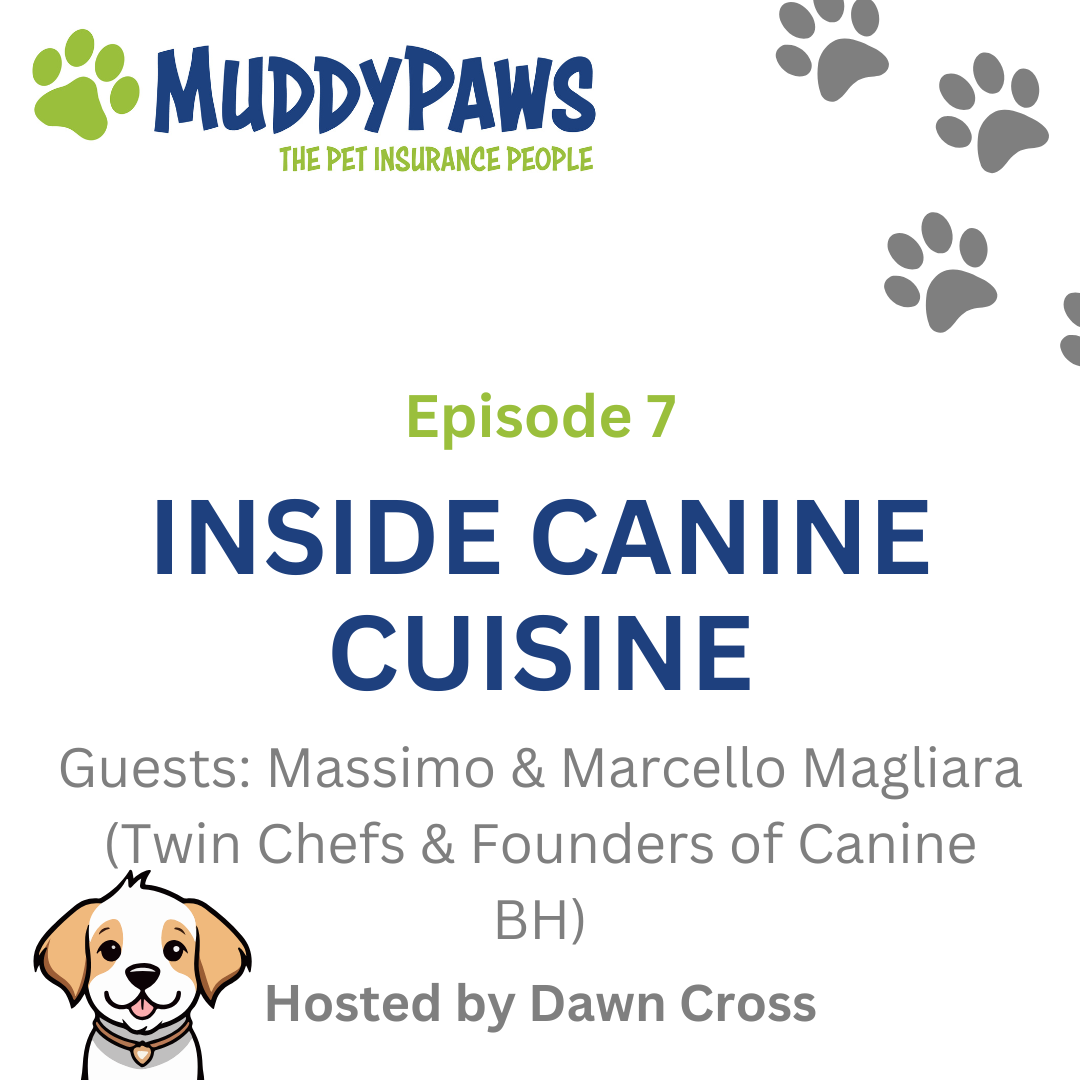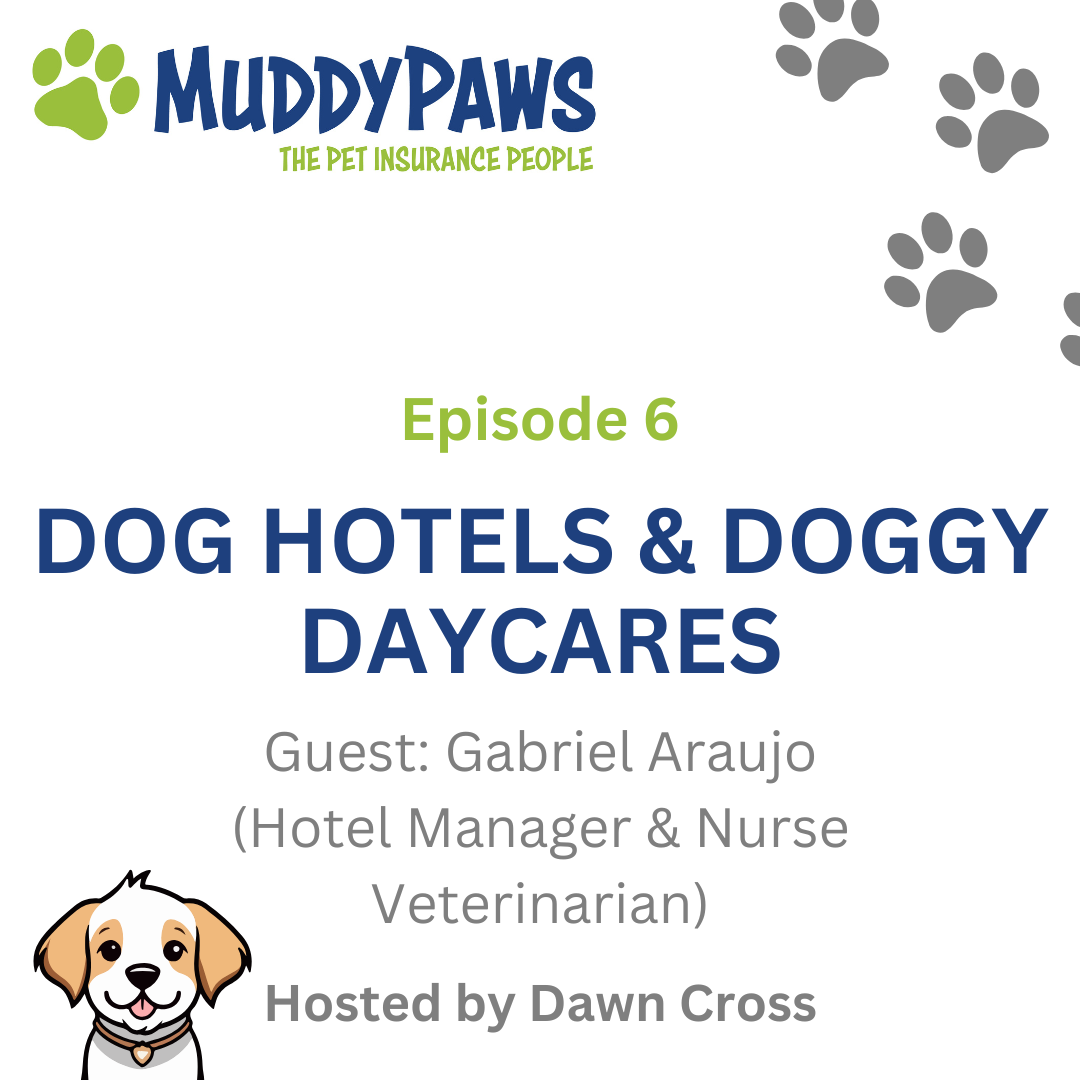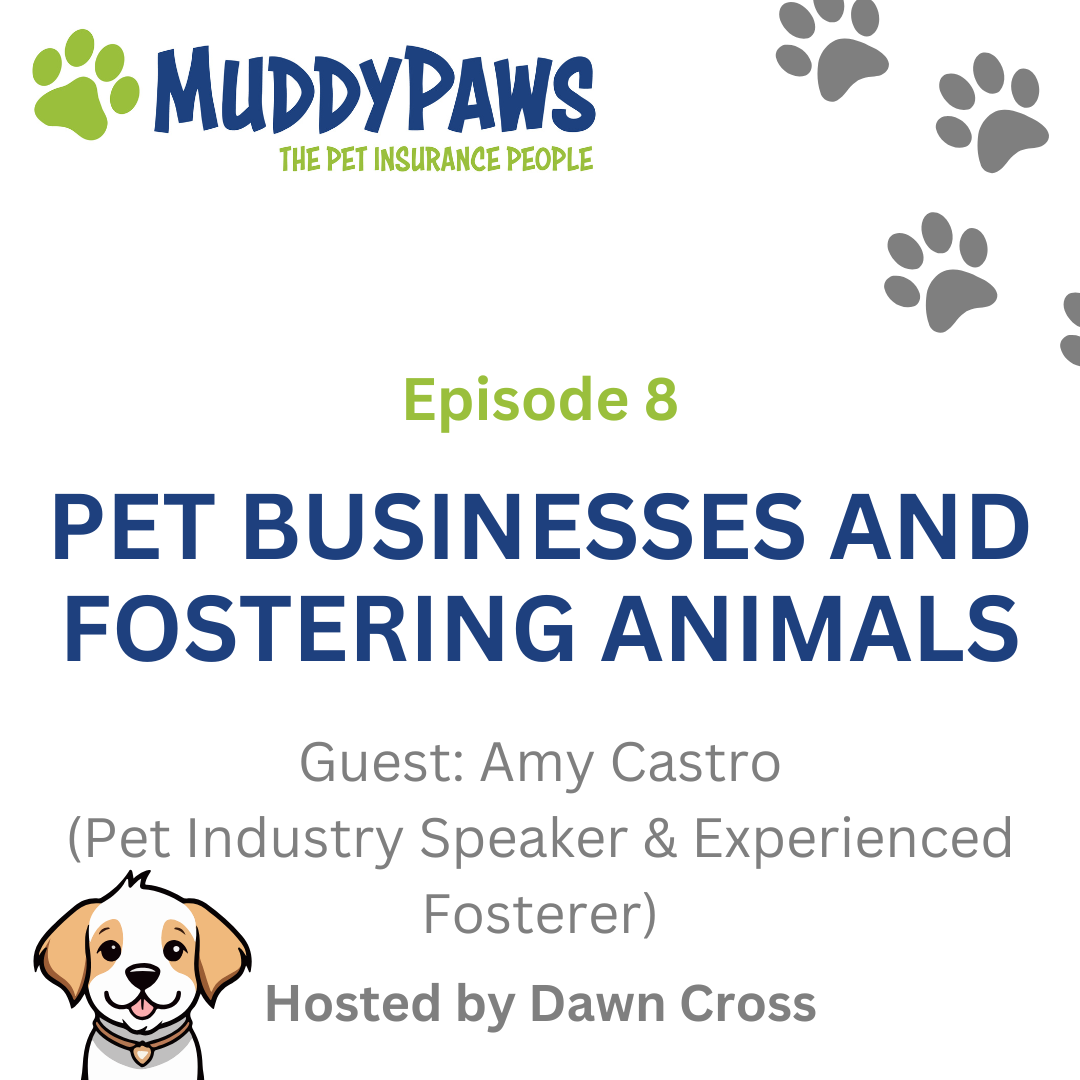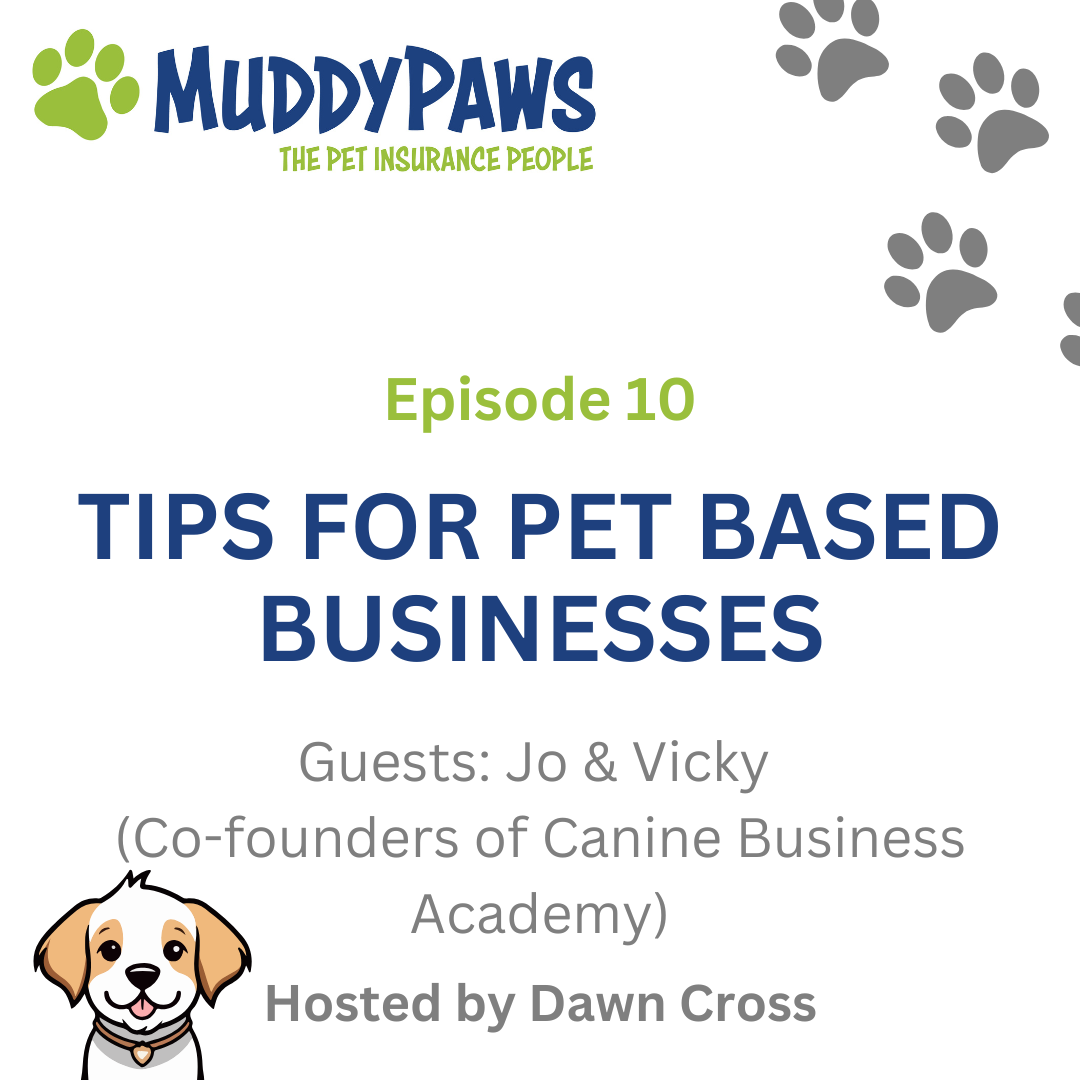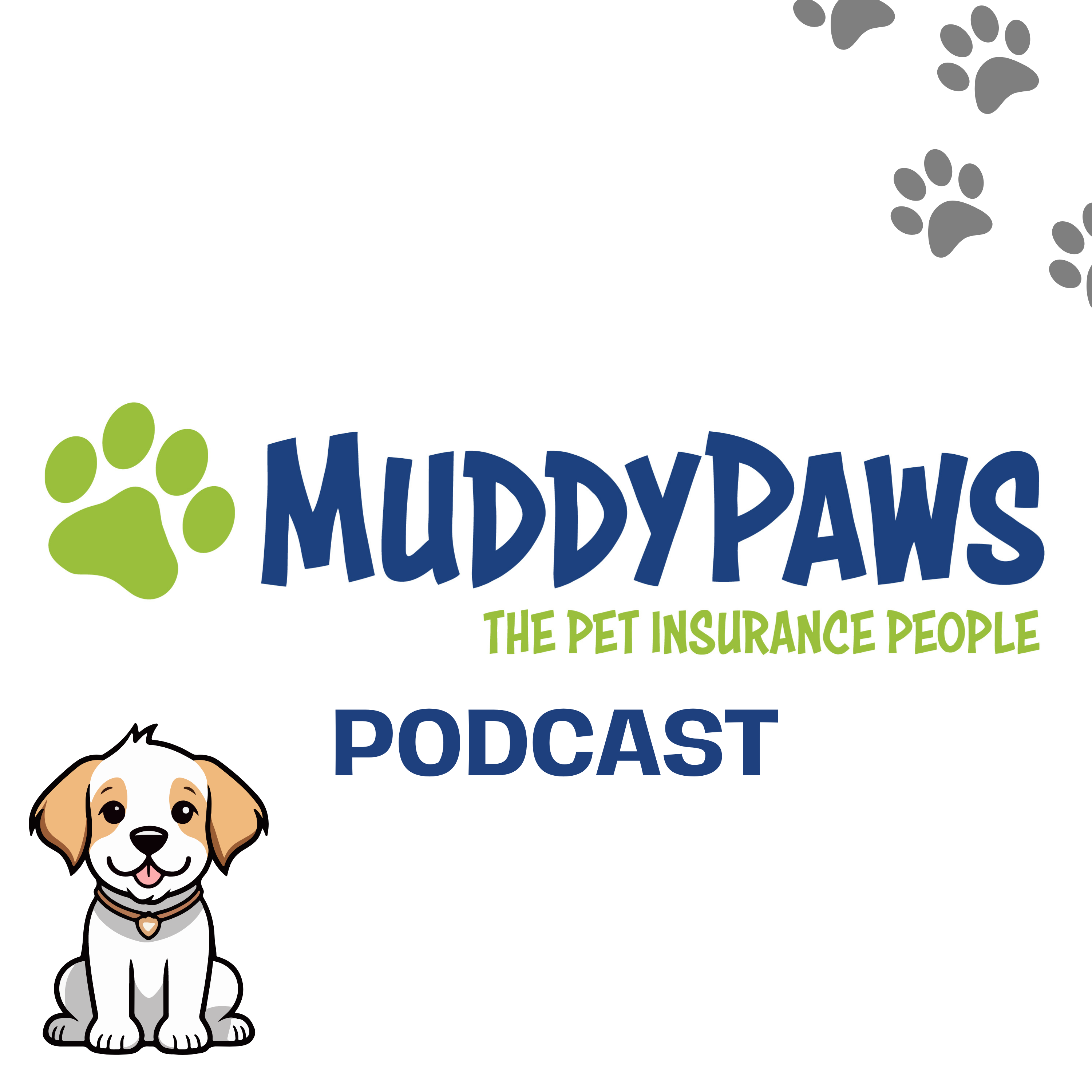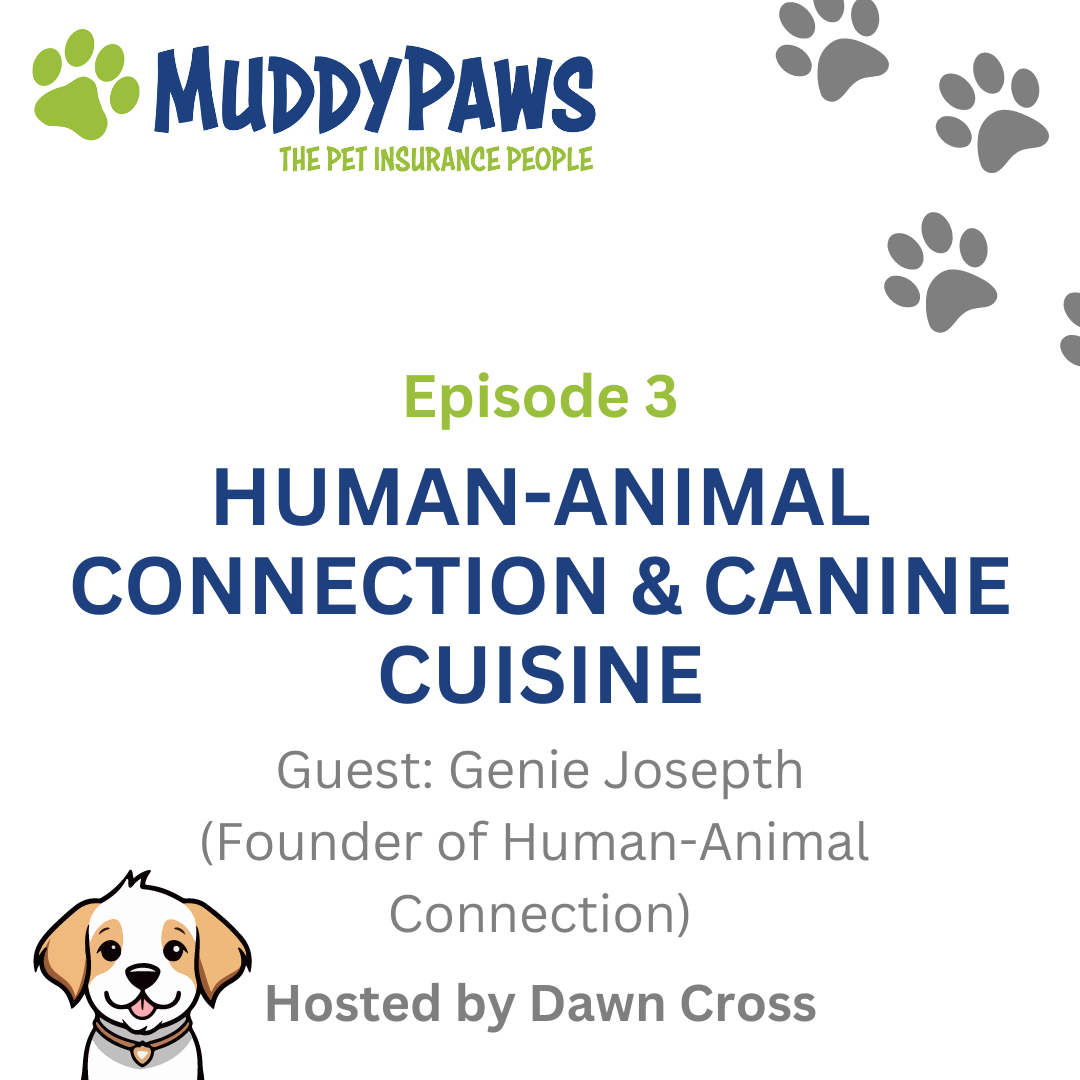Episode Transcript
[00:00:02] Speaker A: Welcome to the Muddy Paws Insurance podcast. I'm your host, Dawn Cross and today I'll be discussing canine cuisine with brothers Massimo and Marcelo Nagliara, chefs and founders of Canine bh.
If you enjoy our podcast, make sure to leave a rating on your favorite podcast directory.
Introduce stuff and what you get up to in your job, like, you know, what's your career? Some people have certain titles, that sort of thing. Which is why I say about that.
[00:00:33] Speaker B: Perfect. No problem.
Okay.
Hello everyone. My name is Massimo. And I'm Marello. We're twin brothers. We're twin brothers and we have our dog food brand known as K9BH. So my brother is the executive chef for B and H and I am the, I handle the operations and we, I take care of all the other logistics that go around, you know, helping our company grow and helping educate our, our pet parents about proper nutrition.
[00:01:05] Speaker A: So the first question we have today is, you know, how did you get into the food industry and then obviously into dog nutrition itself.
[00:01:13] Speaker B: So how we got to the food industry started off about 10 years ago.
My brother and I were both in, in college and we got part time jobs working at a oyster bar. So we were on our nights and weekends we were at this restaurant. It was a 360 bar. The clients were able to sit in front of us and interact. So we got to chuck oysters and interact with people and from there on we kind of just fell in love with the environment and fell in love with culinary and you know, different types of cuisines and you know, tasting different things and just, you know, expanding our palates and getting to experience a whole new world of art and creativity. So after about maybe two years of working part time doing this, we both realized that we were extremely passionate about it and we both wanted to, you know, pursue it as a full time career. So we went to culinary school. We did, we had to do together diploma and that. And we were working for a while in fine dining restaurants and know, doing, doing that, living that lifestyle. And then eventually once Covid hit, obviously for us, I'm sure same thing for you, everything kind of shut down. So we had a lot of time off at the time we were, like I said we were off, we started doing some like little small gigs of cooking here and there for catering. And then eventually we started introducing, you know, family, sorry pets into our lives. So at the time my brother and I were living together, we had adopted dog. His name was, his name is Hunter. If you look on our website, you get to see a picture of him on our Instagram. He's a, a golden poodle. He's about 65 pounds. He's beautiful, big and, you know, lush, has luscious curly hair, super, super cute. And we had him for, for a while. We were, at the time, we were not very educated about the dog food industry. So we were feeding him at first kibble. And then eventually my, my brother and I decided to adopt another dog. So this is when Bear came into the. And we bears an Aussie doodle. He's about 45 pounds. And we slowly, not slowly, but right away discovered that he had a lot of food allergies. So he would get a lot of hot spots, we would get very itchy, he would scratch his face a lot. And every time he would have a meal, like it would be very, very intense scratching. So obviously being very concerned, we tried to at first what it was. We brought him to our veterinari and they told us that he had food allergies, very severe food allergies. So we had to do like, essentially like a process to try to figure out what exactly was allergic to. So there was a protocol we had to do. We followed the protocol. We determined that all the different types of proteins he was allergic to. And that's when we decided obviously being in the culinary field, like we should, we should definitely start cooking for them. Because one, we were realizing how unregulated and unsafe it is for dogs for allergies to, I know, consume kibbles because there's a lot of cross contamination and not very careful. So we took it upon ourselves to educate ourselves into knowing what we could feed both of them. So we spoke to animal nutritionists, veterinarians, we. And over time of trial and ever practicing, you know, cooking different things and seeing we formulated a recipe that suited both of them and they've been just, you know, thriving off this, this in human grade food that, you know, is just.
I can't even explain to you how it's impacted their lives and even impacted a lot of our other family and friends that we kind of introduced to them this process. And we also, you know, kind of like quote unquote, used them as. They're like our guinea pigs. Obviously they were more than willing, so we used to offer them some of our meals. We want to know how they felt, how their dogs felt. And just like the difference you see is night and day and it's like as soon as, like just a couple of days see a change in their energy, the changes in their, in their fur. So it's Just, it's just remarkable. And from there on. Now, we started.
Well, our family members and friends told us maybe you should start, you know, selling these meals as well and, you know, making a business out of it. It would be probably a good idea because you guys can help so many different dog parents, you know, not only with just a food, but just educate them about changes they can make. So this is what fueled our dog food, our dog food business.
[00:05:56] Speaker A: That sounds amazing. It's really great that it's, it's come from like a place of love and passion because you wanted to help your own dogs first. And you know, everyone loves their pets, like their own, like family members as well. So to be able to utilize your culinary skills, to kind of take it to the next level, your pets must be like, quite amazing. I mean, they must have been absolutely pampered and spoiled rotten because you basically just had personal chefs for them.
[00:06:21] Speaker B: Yeah, exactly. It that I could, like, can't even explain to you. There's the difference in their attitude for meal time, especially for, for Hunter. He for a while was like, very resistant to eating kibble and he would like sometimes skip meals. He would skip sometimes two meals. So we're becoming very like, obviously being a parent, senior, you know, your dog not eating, it becomes very nerve wracking, you know, not knowing what's, what's the issue if it's something that either is, you know, something wrong with him or he just doesn't like it. And now, like, I can't even explain to you. Obviously we have like fixed times that we feed them. Hunter probably like about 20 to half an hour before he'll get to go to his bowl, you know, start, you know, pawing at his bowl because he's excited for meal time, you know what I mean? But it's something he never did before. And now like all our, all our dogs, even my, my dog, now I have my own dog. His name is Scotch. He's a kakapoo. And even him, like, they're just so excited for meal time and just seeing how, you know, enthusiastic they are about eating and just know it's, it's just the emotions that you, you feel is just, you know, it's just so much gratification from it. It's amazing.
[00:07:28] Speaker A: It must be absolutely brilliant. So obviously, like, you know, with every dog and every pet, it's different, I guess that the nutrition they should get. Obviously I know there's gonna be a lot of, you know, staple parts of the meal that they will need to receive. So I was Wondering if you give us an example of like, you know what it's like a dish that you have made for hunter in the past or any of the other dogs you've catered for. Like you know what is included to give and ideas like maybe this stuff that they could be providing.
[00:07:56] Speaker B: Yes. So example of like what we, where we do. So, so what I like to do is I like to change it often obviously to give them different nutrients and stuff. So but like one of my, I would say favorite meals to use is for a hunter, for example would be beef because he could eat beef. Unfortunately bear can't. So we give them beef meat. We also use beef organ as well. So anything like liver you could use. I would use liver in very small amounts though, because liver is, it filters toxins. Right. So you don't want to have too much liver in their diet. Obviously it's okay to have it as well. But obviously you want to like say liver, so you would limit it. So I include more heart, I'll include kidney as well. Even if you could get to have access to spleen. I would say approximately for, for the organ meats, about 5% of their, of their, of their meal should be organ meats. So for the actual protein part, the beef I would include anywhere between like 60 to 80% after a meal should be, should be protein. As for vegetable wise, you could do anywhere between like 15 to 20% as example vegetables I would do with the beef I would especially. I'll give you an example of this like this time of year for us, what's in seasonings. I like to do stuff that's very seasonal and fresh. That's not what it's.
It gives obviously the best nutrients. It's at its peak. It's at its obvious not only at its peak, but it's at its best flavor profile. So it adds a lot more flavor into their meals. Because obviously it's not only about, you know, giving them real food, it's about giving stuff that's flavorful and they really enjoy it. So for us over here it's like stuff like pumpkin all this winter squashes. So like butternut squash and acorn squash and kombucha squash. These are all like amazing this time of year. So I include those as well. I'll include sometimes other other types of greens as well, like green beans.
I'll include cabbage as well when I can. So really it's just, I try to diversify as much as possible. And so in each meal I usually put two types of vegetables after the veggies we also like to improve, include some type of carbohydrate. We try to use good carbohydrates because in a lot of pet foods they use lower grade carbohydrates. This is all the waste and byproducts they use from, from the food industry. So stuff that's not fit for human consumption, they'll, you know, put it for dogs. The same thing with the proteins that they use in kibbles and stuff. I'm not going to say this for all companies across the board. Obviously there are some companies that do use, you know, good products, but for the most part they don't use the best. So for carbohydrates we like to use potato, we like to use oats. Flour. You have to use spelt flour is another great grain. You can even use barley. You can even use sweet potato. Millet as well. Millet as well. Those are all great. Like for example, what I used for the last meal, I use spelt flour in mine. So obviously I, I cooked it in with the, with the protein and stuff and it just gives, you know, a nice little, nice little carbohydrate boost, give them a nice, a little bit of energy.
Fruits. Fruits as well. Like to use seasonal fruits stuff for us. Like right now it's a season like apples and pears. Those are great. Obviously other types of fruits as well you could use such as pineapple. Pineapple as well. Mango. I use peaches as well too, when they're in season. So I kind of like, you know, I try to touch a bit of everything.
We use also bone broth in our, in our meals. We make bone broth from scratch.
We usually use the appropriate protein that we're using of those bones from the animals. So if we're doing a beef meal, we'll do use the beef bones and so on for like chicken and turkey and so on. And what else am I missing? Oh, yes, eggshell powder. We use eggshell powder as well. So normally actually we use whole eggs inside. So we crack whole eggs inside our dog's meal, we dehydrate the eggshells and we powder it up and we put that as a supplement inside their food. So why we do that is dogs do benefit a lot from eating raw bones and some dogs, depending their size, have a bit of a harder time with bones. So we use eggshell, which is a great alternative source to that, to give them all that calcium and a bunch of other things that, you know, nutrients that they need from, from that we supplement with the eggshell. It's another great, great little tip you could use even on your, your dog's meals. You know, even as a top, as a topper as well. It's a great. You could even. Our dogs kind of have a difficult time when eating the shell. Some of them, they sometimes a bit too crunchy or whatever, they don't really like it so we just put it in as a powder. But if your dog enjoys eating eggshell just like that, you could literally just crack the whole egg inside, shell and all and they'll see them. I've seen many dogs just crunch away at the.
If you mentioned the organ. Yeah, I mentioned the Oregon. I mentioned the vegetables, I mentioned the, the protein, mentioned the carbohydrates, the fruits. What's it called? The golden paste. Oh yes, another. So we use, in some of our meals we use this thing called golden paste. So in all the mills we incorporate just a little bit of a type of fat. So it could be hemp seed oil, it could be coconut oil, even be olive oil. We have this thing that we use is called golden paste that we mix in turmeric powder with the coconut oil and a little bit of black pepper. So what the black pepper does is it helps activate the properties in the turmeric to give the dog the health benefits that they need. It's essentially like an anti inflammatory and has a bunch of other little things that it helps do as well. So for the joint health. Exactly. So this is another little, little hack that we like to use to, you know, boost our dogs, you know, their immune system and their health. And that's like just a very quick rundown about what a meal could consist of.
[00:14:00] Speaker A: That sounds really good and it sounds, it's very comprehensive and it's obviously quite similar to how we, we as humans are supposed to eat as well, isn't it? You know, you've got the, you need to have protein, you need to have the carbohydrates, you know, that. And obviously not every food company, like you said, is necessarily going to hit all those points. Which is why like, you know, dogs, you know, they eat it and it's all right, but then actually they're not going to be their peak or they're not going to particularly feel too energetic. Some of it is just probably even like the bare minimum of nutrients.
[00:14:29] Speaker B: And that's, that's exactly it. I mean, if you look at most, you know, dog food brands that make kibble, their meals consist of over 50% carbohydrates and they consist of Very minimal protein. The protein that they use is all, like I said, it's by products, right? So it's like the words that they use is like beef meal or like chicken meal. So these are, are basically, they're, like I said, they're meat products that are not fit for human consumption for so many different reasons. It could be that the animal, you know, passed away from unknown causes or certain types of infections and stuff that are. Obviously, you cannot be feeding that to humans. So what they do is they take this, this meat and they cook it a lot of times, like approximately like four slams five times, try to really kill all the bacteria as best they can. But what they're doing is killing all the good stuff in it as well. So you're killing the bad and the good and you get left with this, you know, this dehydrated beef meal, this dehydrated thing that is just, it just essentially becomes a filler, right? It's not really, that's not really doing anything for your dog. So it's a bit, it's a bit, you know, unfortunate because, you know, these, these little guys there, these little girls deserve, you know, so much more than just byproducts that are not fit for humans. And I don't see how, if it's being not fit for humans, how could it be fit for dogs? Just feel like that's not, that's not fair. And you know, they deserve to have healthy meals as well, to feel their best, right?
[00:16:00] Speaker A: Oh, definitely.
And at the end of the day, if you're a pet parent and there's like, you know, a 90 chance that you'd want what's best for them.
Thinking of dog nutrition as well, like, you know, is there any particular nutrition group, so to speak, that people should pay attention most especially when they're looking at either food that they're purchasing, if they're looking to maybe go on to a more cooked raw food diet sort of situation.
[00:16:25] Speaker B: So when you look at nutrition for, for dogs, it's actually in some senses it's very similar to humans, right? Or so if you, as people tend to like over complicate or they think it's over complicated, it's, it's really not. Once you understand it for humans, you can understand it for dogs as well. Dogs, unlike the, we'll call it on the, the spectrum of being either carnivores or omnivores, they're, they're like an in between. People like to use the term, the term carnivorous. Omnivorous. So carnivorous omnivores White, Carmen's first stage, do need a more protein based diet, a little bit more than, than humans, but they still do need some vegetables and stuff. So they don't need to have some vegetables and fruits to put like into perspective, like different animals. Let's say for example a cat, a cat will be on the really foreign and carnivore carnivores, you know, diet, they'll eat primary protein. You know, to be honest, they only really need. Only. Yeah, they don't, they don't benefit from eating vegetables and stuff. Obviously you could give it to them if they really like it, but honestly like they don't, they don't need that. They need, they need protein, they need meat. Dogs are a bit lower on that spectrum. So if they need to eat a lot of meat, but they also need some vegetables as well, some carbohydrates and some other things. As we're like kind of like smack in the middle or close to the middle, that we need a bit of both. Right. So you could focus more on protein for dogs, but obviously it's good to include some other things as well, like some other vegetables and stuff. So if you want to maybe as like a start point for a lot of pet parents, if you want to start using real food as a topper, because even just making small changes to your dog's food and starting to do some real food, they will reap a lot of benefits from it a lot more than what you're saying. So great, great, great, great starting point to help, you know, feel more comfortable and adapt. And you would use cooked minced meats. You could use certain vegetables like sweet potato, you could use pumpkin puree just as a topper for now to start. And bone broth as well. Bone broth as well is a great one. There's a topper, moisturizes the food so it's not eating dry, you know, crunchy. Because really the, the dryness of the food doesn't really do anything for them. If anything it's not good for them. Yeah, they drink less water when the food is hydrated. So hydrating the food is.
Yeah, it's a very great way to start as well. And then you could start by slowly introducing the, the cooked food and start, you know, producing it yourself. Or if you want, you can buy it as well. And then once you see them really are used to and they've done the proper transition to the cooked food, if your dog has the gut that can really handle eating raw, you could slowly start introducing the raw diet. After as well. And you could introduce it obviously in the raw vegetables and the raw proteins and stuff. Not all dogs, depending their situation can handle, especially dogs that are a lot older, they tend to have a lot of, you know, more gut issues and even sometimes puppies as well. It really depends the situation. So you gotta. So yeah, be wary of the E. Coli and other contaminants that could happen in a produce of protein because, you know, I mean, sometimes you're not 100 sure where it came from. Let you know for sure it's completely safe if you get it from a local farmer. Well, not. But there's always that chance. So cooked is always the safest route. But there are some benefits from eating raw, of course, nutrients that we'll have in raw food, over cooked food. Dogs, dogs could. Dogs with healthy guts can really handle raw food extremely well. And including chicken and including turkey, including all the stuff that, you know, is fit, you know, unfit for human consumption raw. So yeah, that's what, that's what I could recommend as a. As maybe like a starting forge on how to transition and what the other nutrients and stuff and things you could look for as well.
[00:20:12] Speaker A: Is there anything else you'd like to add to the episode before we wrap it up?
[00:20:18] Speaker B: Anything else you want to add?
Oh, we could maybe one I could talk about. I would like to add my, like my Instagram and my, my website as well and maybe we could talk about role. I mean it's a bit different because depending on the audience but in our, in our area, we're planning to host a seminar in the new year to teach pet parents about animal nutrition and help them, you know, make better choices for the dog and teach them how they could make their own meals for their dog as well. So I'd like to maybe add that as well. Whoever is. Maybe some of your listeners could be from, you know, from Canada and they'd be interested in attending our seminar.
[00:20:57] Speaker A: Yeah, definitely. Do you reckon you'll ever do it online as well?
[00:21:00] Speaker B: So in the future we're looking at doing it online and even we're. We're hoping to eventually have our own platform where we have videos and stuff educating pet parents on so many different topics of nutrition from far from stuff like making treats to making the meals doing cooked and raw to recipes, recipes and so on and so forth. So that's something as well actually I would like to mention and that's those are our goals for the future.
[00:21:27] Speaker A: That sounds amazing.
Yeah. How can people find you then? Obviously, if they're interested more about kind of the educational content or whether they're interested in purchasing from you guys. What's your links?
[00:21:38] Speaker B: So our links, Our website is www.k9bh.com, our Instagram handle is K9BH and our Facebook handle is Cuisine Cuisine, Canine BH and anything else? No, that's it.
[00:21:59] Speaker A: Yeah, we'll include the links in the bottom in the description as well.
[00:22:03] Speaker B: Perfect. Thank you.
[00:22:05] Speaker A: Well, thank you so much for coming on and I appreciate you guys giving your time up to chat along about dog nutrition.
[00:22:12] Speaker B: Thank you so much for having us. Thank you for having us. It's been a pleasure.
[00:22:18] Speaker A: Thank you to my guests today, Massimo Marcelo, for chatting about their business and advice when it comes to canine cuisine. If you'd like to know more about their work, please click the link in the description.
I have been your host, Dawn Cross and make sure to click follow for more episodes.
Muddy Paws takes pride in keeping things simple. My goal is to provide a reliable insurance policy that is well delivered and gives you peace of mind, intelligent underwriting, a user friendly application and outstanding customer service. Ensure we stand out from the crowd and provide the best for your furry friends.
